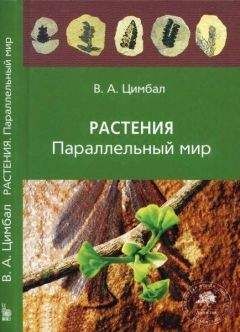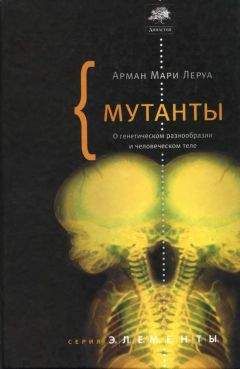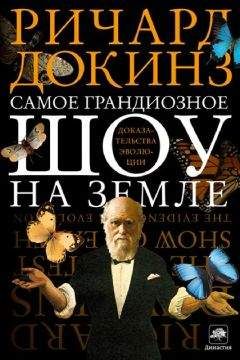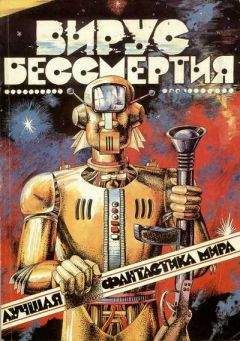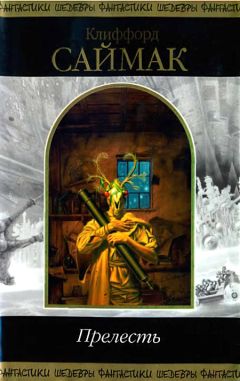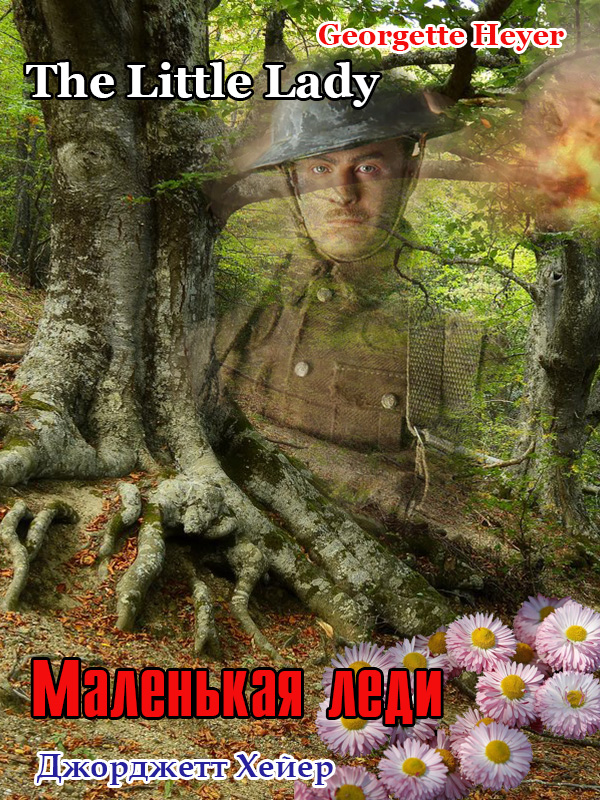Франс де Вааль - Достаточно ли мы умны, чтобы судить об уме животных?
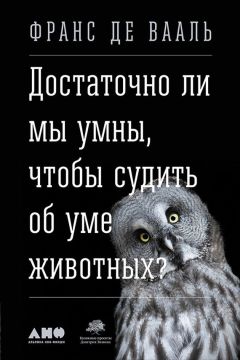
Помощь проекту
Достаточно ли мы умны, чтобы судить об уме животных? читать книгу онлайн
Siebenaler, J. B., and D. K. Caldwell. 1956. Cooperation among adult dolphins. Journal of Mammalogy 37:126–28.
Silberberg, A., and D. Kearns. 2009. Memory for the order of brief ly presented numerals in humans as a function of practice. Animal Cognition 12:405–7.
Skinner, B. F. 1938. The Behavior of Organisms. New York: Appleton-Century-Crofts.
–. 1956. A case history of the scientific method. American Psychologist 11:221–33.
–. 1969. Contingencies of Reinforcement. New York: Appleton-Century-Crofts.
Slocombe, K., and K. Zuberbühler. 2007. Chimpanzees modify recruitment screams as a function of audience composition. Proceedings of the National Academy of Sciences USA 104:17228–33.
Smith, A. 1976 [orig. 1759]. A Theory of Moral Sentiments, ed. D. D. Raphael and A. L. Macfie. Oxford: Clarendon.
Smith, J. D., et al. 1995. The uncertain response in the bottlenosed dolphin (Tursiops truncatus). Journal of Experimental Psychology: General 124:391–408.
Sober, E. 1998. Morgan's canon. In The Evolution of Mind, ed. D. D. Cummins and Colin Allen, 224–42. Oxford: Oxford University Press.
Soltis, J., et al. 2014. African elephant alarm calls distinguish between threats from humans and bees. Plos ONE 9: e89403.
Sorge, R. E., et al. 2014. Olfactory exposure to males, including men, causes stress and related analgesia in rodents. Nature Methods 11:629–32.
Spocter, M. A., et al. 2010. Wernicke's area homologue in chimpanzees (Pan troglodytes) and its relation to the appearance of modern human language. Proceedings of the Royal Society B 277:2165–74.
St. Amant, R., and T. E. Horton. 2008. Revisiting the definition of animal tool use. Animal Behaviour 75:1199–208.
Stenger, V. J. 1999. The anthropic coincidences: A natural explanation. Skeptical Intelligencer 3:2–17.
Stix, G. 2014. The "it" factor. Scientific American, Sept., pp. 72–79.
Suchak, M., and F. B. M. de Waal. 2012. Monkeys benefit from reciprocity without the cognitive burden. Proceedings of the National Academy of Sciences USA 109:15191–96.
Suchak, M., T. M. Eppley, M. W. Campbell, and F. B. M. de Waal. 2014. Ape duos and trios: Spontaneous cooperation with free partner choice in chimpanzees. PeerJ 2: e417.
Suddendorf, T. 2013. The Gap: The Science of What Separates Us from Other Animals. New York: Basic Books.
Suzuki, T. N. 2014. Communication about predator type by a bird using discrete, graded and combinatorial variation in alarm call. Animal Behaviour 87:59–65.
Tan, J., and B. Hare. 2013. Bonobos share with strangers. Plos ONE 8: e51922. Taylor, A. H., et al. 2014. Of babies and birds: Complex tool behaviours are not sufficient for the evolution of the ability to create a novel causal intervention. Proceedings of the Royal Society B 281:20140837.
Taylor, A. H., and R. D. Gray. 2009. Animal cognition: Aesop's fable f lies from fiction to fact. Current Biology 19: R731–32.
Taylor, A. H., G. R. Hunt, J. C. Holzhaider, and R. D. Gray. 2007. Spontaneous metatool use by New Caledonian crows. Current Biology 17:1504–7.
Taylor, J. 2009. Not a Chimp: The Hunt to Find the Genes That Make Us Human. Oxford: Oxford University Press.
Terrace, H. S., L. A. Petitto, R. J. Sanders, and T. G. Bever. 1979. Can an ape create a sentence? Science 206:891–902.
Thomas, R. K. 1998. Lloyd Morgan's Canon. In Comparative Psychology: A Handbook, ed. G. Greenberg and M. M. Haraway, 156–63. New York: Garland.
Thompson, J. A. M. 2002. Bonobos of the Lukuru Wildlife Research Project. In Behavioural Diversity in Chimpanzees and Bonobos, ed. C. Boesch, G. Hohmann, and L. Marchant, 61–70. Cambridge: Cambridge University Press.
Thompson, R. K. R., and C. L. Contie. 1994. Further ref lections on mirror usage by pigeons: Lessons from Winnie-the-Pooh and Pinocchio too. In Self-Awareness in Animals and Humans, ed. S. T. Parker et al., 392–409. Cambridge: Cambridge University Press.
Thorndike, E. L. 1898. Animal intelligence: An experimental study of the associate processes in animals. Psychological Reviews, Monograph Supplement 2.
Thorpe, W. H. 1979. The Origins and Rise of Ethology: The Science of the Natural Behaviour of Animals. London: Heineman.
Tinbergen, N. 1953. The Herring Gull's World. London: Collins.
–. 1963. On aims and methods of ethology. Zeitschrift für Tierpsychologie 20: 410–40.
Tinbergen, N., and W. Kruyt. 1938. Über die Orientierung des Bienenwolfes (Philanthus triangulum Fabr.). III. Die Bevorzugung bestimmter Wegmarken. Zeitschrift für Vergleichende Physiologie 25:292–334.
Tinklepaugh, O. L. 1928. An experimental study of representative factors in monkeys. Journal of Comparative Psychology 8:197–236.
Toda, K., and S. Watanabe. 2008. Discrimination of moving video images of self by pigeons (Columba livia). Animal Cognition 11:699–705.
Tolman, E. C. 1927. A behaviorist's definition of consciousness. Psychological Review 34:433–39.
Tomasello, M. 2014. A Natural History of Human Thinking. Cambridge, MA: Harvard University Press.
–. 2008. Origins of human cooperation. Tanner Lecture, Stanford University, Oct. 29–31.
Tomasello, M., and J. Call. 1997. Primate Cognition. New York: Oxford University Press.
Tomasello, M., A. C. Kruger, and H. H. Ratner. 1993. Cultural learning. Behavioral and Brain Sciences 16:495–552.
Tomasello, M., E. S. Savage-Rumbaugh, and A. C. Kruger. 1993. Imitative learning of actions on objects by children, chimpanzees, and enculturated chimpanzees. Child Development 64:1688–705.
Tramontin, A. D., and E. A. Brenowitz. 2000. Seasonal plasticity in the adult brain. Trends in Neurosciences 23:251–58.
Troscianko, J., et al. 2012. Extreme binocular vision and a straight bill facilitate tool use in New Caledonian crows. Nature Communications 3:1110.
Tsao, D., S. Moeller, and W. A. Freiwald. 2008. Comparing face patch systems in macaques and humans. Proceedings of the National Academy of Sciences USA 105:19514–19.
Tulving, E. 2005. Episodic memory and autonoesis: Uniquely human? In The Missing Link in Cognition, ed. H. Terrace and J. Metcalfe, 3–56. Oxford: Oxford University Press.
–. 1972. Episodic and semantic memory. In Organization of Memory, ed. E. Tulving and W. Donaldson, 381–403. New York: Academic Press.
–. 2001. Origin of autonoesis in episodic memory. In The Nature of Remembering: Essays in Honor of Robert G. Crowder, ed. H. L. Roediger et al., 17–34. Washington, DC: American Psychological Association.
Uchino, E., and S. Watanabe. 2014. Self-recognition in pigeons revisited. Journal of the Experimental Analysis of Behavior 102:327–34.
Udell, M. A. R., N. R. Dorey, and C. D. L. Wynne. 2008. Wolves outperform dogs in following human social cues. Animal Behaviour 76:1767–73.
–. 2010. What did domestication do to dogs? A new account of dogs' sensitivity to human actions. Biological Review 85:327–45.
Uexküll, J. von. 1909. Umwelt und Innenwelt der Tiere. Berlin: Springer.
–. 1957 [orig. 1934]. A stroll through the worlds of animals and men. A picture book of invisible worlds. In Instinctive Behavior, ed. C. Schiller, 5–80. London Methuen.
Vail, A. L., A. Manica, and R. Bshary. 2014. Fish choose appropriately when and with whom to collaborate. Current Biology 24: R791–93.
van de Waal, E., C. Borgeaud, and A. Whiten. 2013. Potent social learning and conformity shape a wild primate's foraging decisions. Science 340:483–85.
van Hooff, J. A. R. A. M. 1972. A comparative approach to the phylogeny of laughter and smiling. In Non-Verbal Communication, ed. R. A. Hinde, 209 – 41. Cambridge: Cambridge University Press.
van Leeuwen, E. J. C., K. A. Cronin, and D. B. M. Haun. 2014. A group-specific arbitrary tradition in chimpanzees (Pan troglodytes). Animal Cognition 17:1421–25.
van Leeuwen, E. J. C., and D. B. M. Haun. 2013. Conformity in nonhuman primates: Fad or fact? Evolution and Human Behavior 34:1–7.
van Schaik, C. P., L. Damerius, and K. Isler. 2013. Wild orangutan males plan and communicate their travel direction one day in advance. Plos ONE 8: e74896.
van Schaik, C. P., R. O. Deaner, and M. Y. Merrill. 1999. The conditions for tool use in primates: Implications for the evolution of material culture. Journal of Human Evolution 36:719–41.
Varki, A., and D. Brower. 2013. Denial: Self-Deception, False Beliefs, and the Origins of the Human Mind. New York: Twelve.
Vasconcelos, M., K. Hollis, E. Nowbahari, and A. Kacelnik. 2012. Pro-sociality without empathy. Biology Letters 8:910–12.
Vauclair, J. 1996. Animal Cognition: An Introduction to Modern Comparative Psychology. Cambridge, MA: Harvard University Press.
Visalberghi, E., and L. Limongelli. 1994. Lack of comprehension of cause-effect relations in tool-using capuchin monkeys (Cebus apella). Journal of Comparative Psychology 108:15–22.
Visser, I. N., et al. 2008. Antarctic peninsula killer whales (Orcinus orca) hunt seals and a penguin on f loating ice. Marine Mammal Science 24:225–34.
Wade, N. 2014. A Troublesome Inheritance: Genes, Race and Human History. New York: Penguin.
Wallace, A. R. 1869. Sir Charles Lyell on geological climates and the origin of species. Quarterly Review 126:359–94.
Wascher, C. A. F., and T. Bugnyar. 2013. Behavioral responses to inequity in reward distribution and working effort in crows and ravens. Plos ONE 8: e56885.
Wasserman, E. A. 1993. Comparative cognition: Beginning the second century of the study of animal intelligence. Psychological Bulletin 113:211–28.
Watanabe, A., U. Grodzinski, and N. S. Clayton. 2014. Western scrub-jays allocate longer observation time to more valuable information. Animal Cognition 17:859–67.
Watson, S. K., et al. 2015. Vocal learning in the functionally referential food grunts of chimpanzees. Current Biology 25:1–5.
Weir, A. A., J. Chappell, and A. Kacelnik. 2002. Shaping of hooks in New Caledonian crows. Science 297:981–81
Wellman, H. M., A. T. Phillips, and T. Rodriguez. 2000. Young children's understanding of perception, desire, and emotion. Child Development 71: 895–912.
Wheeler, B. C., and J. Fischer. 2012. Functionally referential signals: A promising paradigm whose time has passed. Evolutionary Anthropology 21:195–205.
White, L. A. 1959. The Evolution of Culture. New York: McGraw-Hill. Whitehead, H., and L. Rendell. 2015. The Cultural Lives of Whales and Dolphins. Chicago: University of Chicago Press.
Whiten, A., V. Horner, and F. B. M. de Waal. 2005. Conformity to cultural norms of tool use in chimpanzees. Nature 437:737–40.
Wikenheiser, A., and A. D. Redish. 2012. Hippocampal sequences link past, present, and future. Trends in Cognitive Sciences 16:361–62.
Wilcox, S., and R. R. Jackson. 2002. Jumping spider tricksters: Deceit, predation, and cognition. In the Cognitive Animal: Empirical and Theoretical Perspectives on Animal Cognition, ed. M. Bekoff, C. Allen, and G. Burghardt, 27–33. Cambridge, MA: MIT Press.
Wilfried, E. E. G., and J. Yamagiwa. 2014. Use of tool sets by chimpanzees for multiple purposes in Moukalaba-Doudou National Park, Gabon. Primates 55:467–42.
Wilson, E. O. 1975. Sociobiology: The New Synthesis. Cambridge, MA: Belknap Press.
–. 2010. Anthill: A Novel. New York: Norton.
Wilson, M. L., et al. 2014. Lethal aggression in Pan is better explained by adaptive strategies than human impacts. Nature 513:414–17.
Wittgenstein, L. 1958 [orig. 1953]. Philosophical Investigations, 2nd ed. Oxford: Blackwell.
Wohlgemuth, S., I. Adam, and C. Scharff. 2014. FOXP2 in songbirds. Current Opinion in Neurobiology 28:86–93.
Wynne, C. D., and M. A. R. Udell. 2013. Animal Cognition: Evolution, Behavior and Cognition. 2nd. ed. New York: Palgrave Macmillan.
Yamakoshi, G. 1998. Dietary responses to fruit scarcity of wild chimpanzees at Bossou, Guinea: Possible implications for ecological importance of tool use. American Journal of Physical Anthropology 106:283–95.
Yamamoto, S., T. Humle and M. Tanaka. 2009. Chimpanzees help each other upon request. Plos One 4: e7416.
Yerkes, R. M. 1925. Almost Human. New York: Century.
–. 1943. Chimpanzees: A Laboratory Colony. New Haven, CT: Yale University Press.
Zahn-Waxler, C., M. Radke-Yarrow, E. Wagner, and M. Chapman. 1992. Development of concern for others. Developmental Psychology 28:126–36. Zylinski, S. 2015. Fun and play in invertebrates. Current Biology 25: R10–12.
Словарь
Аналогия – структурно и функционально сходные черты (например, обтекаемое тело рыб и дельфинов), возникшие независимо в ходе эволюции как приспособления к одинаковым условиям окружающей среды. См. также Конвергентная эволюция.
Антропоморфизм – наделение других видов человеческими свойствами и знаниями.
Антропоцентризм – мировоззрение, в центре которого находится человек.
Биологически подготовленное обучение – склонность к обучению, возникшая в результате приспособления к определенным экологическим условиям и способствующая выживанию. См. также Эффект Гарсии.
